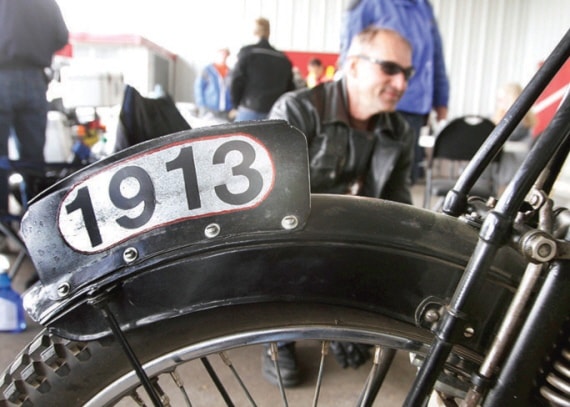The phrase “They don’t make them like they used to,” could be heard from many people at a vintage bike rally last weekend.
Motorcycle enthusiasts showed off their bikes to fans at the Stampede Grounds during the 17th annual Central Alberta Vintage Motorcycle Group rally.
Bikes from as long ago as 1913 were on display with restorers telling the tale of how they put them together. Bill Hoar, president of the Canadian Vintage Motorcycle Group, says there are 2,400 members across the country who love to rebuild old motorbikes.
This year they celebrated 90 years of BMW, the company is known for its strength in motorcycle engineering, he explained.
These rallies are a way for members to get inspired by other restorers and helps to drive interest in their group.
“This kind of adds interest,” he said. “You start seeing some of the stuff people have done.”
And everyone at the rally loves motorbikes enough they all have more than one, he added. Hoar’s oldest is a 1929 Harley-Davidson, which is being worked on but he also had on display a 1986 Honda 750 VFR, which was in production for only one year.
The motorcycle that seemed to draw everyone’s eyes was a 1913 Ariel Roadster, owned by Jim Green of Vernon, B.C. Only two of these motorcycles are known to have survived a century — Green’s and one that sold to a private collector in the United Kingdom. Perhaps more interesting is the story behind the bike’s recovery.
Green found part of the frame in an abandoned homestead in central British Columbia in 1986. After some discussion with the landowner he was able to purchase the artifact and have access to search the rest of the property. “We struck up a deal and I bought the bike, what was left of it.”
Green searched an area about as large as five football fields, scouring the land for every little piece of the Ariel; in some places he had to dig five feet down, not unlike an archaeologist, to find parts. The search took one year.
“I found all kinds of treasures in there,” he stated.
The front fender was found in an old shed and had actually been driven over by a tractor. He reshaped the fender but lost the front pyramid, which had the date of the bike on it. “This is the only piece that is not an original part of the bike”, he said.
The Ariel’s headlight and tail light are acetylene gas lamps, which are lit with a match, and it features a three-speed transmission. It still runs and Green rode it at the show for the other motorcyclists.
